
BioChip Journal
Scope & Guideline
Advancing Biochip Innovations for a Healthier Tomorrow
Introduction
Aims and Scopes
- Microfluidic Technologies:
The journal extensively covers advancements in microfluidic devices, emphasizing their design, fabrication, and application in biological assays, diagnostics, and therapeutic interventions. - Biosensors and Detection Systems:
Research on biosensors, particularly electrochemical and optical biosensors, is a core focus, highlighting their use in disease detection, environmental monitoring, and food safety. - Organ-on-a-Chip Models:
The development and application of organ-on-a-chip technologies for simulating human organ functions and disease modeling are prominent, allowing for in vitro studies that mimic physiological conditions. - Nanotechnology in Biotechnology:
The application of nanomaterials in biosensing and drug delivery systems is a significant area of interest, contributing to the enhancement of detection sensitivity and therapeutic efficacy. - Disease Modeling and Drug Development:
The journal emphasizes research that utilizes biochips and microfluidic systems for modeling diseases, particularly cancer and infectious diseases, along with drug screening and personalized medicine.
Trending and Emerging
- Point-of-Care Testing Innovations:
There is a growing trend towards the development of portable and rapid point-of-care testing devices, especially in response to global health challenges such as the COVID-19 pandemic. - Artificial Intelligence and Machine Learning Applications:
The integration of AI and machine learning techniques in analyzing data from biochips is emerging as a significant theme, enhancing the efficiency and accuracy of diagnostics. - Sustainable and Eco-Friendly Materials:
Research utilizing sustainable materials for biochip fabrication and biosensor development is gaining traction, reflecting a broader trend towards environmentally responsible practices in biotechnology. - Advanced Imaging and Analytical Techniques:
Emerging themes in imaging technologies for real-time monitoring and analysis of cellular processes using biochips are becoming increasingly prominent, indicating a shift towards more sophisticated analytical capabilities. - Regenerative Medicine and Tissue Engineering:
There is an expanding focus on using biochips for applications in regenerative medicine and tissue engineering, particularly in mimicking complex tissue environments for drug testing and disease modeling.
Declining or Waning
- Traditional Laboratory Techniques:
There is a noticeable decline in publications focusing on conventional laboratory techniques, as researchers increasingly favor microfluidic and automated systems for efficiency and sensitivity. - Non-Microfluidic Biomarker Detection:
Papers centered on traditional biomarker detection methods that do not utilize microfluidic technologies are becoming less frequent, reflecting a move towards more integrated and miniaturized approaches. - Basic Research on Biochemical Mechanisms:
While foundational biochemical research remains important, the journal has seen fewer submissions dedicated solely to basic science without a clear application in biochip technology or diagnostics.
Similar Journals

ADMET and DMPK
Advancing drug discovery through innovative research.ADMET and DMPK is a premier open-access journal published by IAPC PUBLISHING since 2013, focusing on the rapidly evolving fields of ADMET (Absorption, Distribution, Metabolism, Excretion, and Toxicity) and DMPK (Drug Metabolism and Pharmacokinetics). Catering to researchers, professionals, and students in the realms of pharmacology, toxicology, and medicinal chemistry, this journal plays a crucial role in fostering innovation and collaboration within the interdisciplinary landscape of drug development. With an impressive Q1 ranking in Pharmacology, Toxicology and Pharmaceutics and ranking in the top percentiles across various categories such as Chemistry and Health, ADMET and DMPK provides a reputable platform for high-quality publications. Its global reach, complemented by its open-access model, ensures that valuable research is accessible to a wide audience. As we converge towards 2024, this journal remains dedicated to advancing knowledge and practices that shape the future of drug discovery and safety, making it an essential resource in the scientific community.
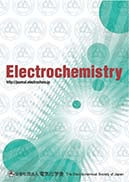
ELECTROCHEMISTRY
Advancing Electrochemical Innovation WorldwideELECTROCHEMISTRY is an esteemed journal published by the Electrochemical Society of Japan, dedicated to advancing the field of electrochemical science and technology. With an ISSN of 1344-3542 and an E-ISSN of 2186-2451, this journal has been providing a platform for scholarly communication since its inception in 1996, with a converged scope extending to 2024. As an Open Access publication since 2020, it facilitates the wide dissemination of research, fostering collaboration among researchers, professionals, and students alike. Currently positioned in Q3 of the electrochemistry category and ranking 52 out of 60 in Scopus, ELECTROCHEMISTRY is committed to publishing high-quality, peer-reviewed articles that explore novel electrochemical systems, applications, and methodologies. With its base in Tokyo, Japan, the journal serves a global audience, promoting cutting-edge research that drives innovation in energy, materials science, and analytical chemistry.

Microfluidics and Nanofluidics
Pioneering Research for Tomorrow's TechnologiesMicrofluidics and Nanofluidics is a distinguished academic journal published by Springer Heidelberg, focusing on the rapidly evolving fields of micro and nanotechnology. With a commitment to disseminating cutting-edge research, this peer-reviewed journal aims to bridge the gap between fundamental science and practical application within Condensed Matter Physics, Materials Chemistry, and Nanoscience and Nanotechnology. It holds an influential position in its field, reflected by its Category Quartiles (Q3) and notable Scopus Rankings, including a ranking of #145 in Condensed Matter Physics. Researchers, professionals, and students will find this journal to be an invaluable resource for accessing pioneering studies, methodologies, and innovative technologies essential for advancing knowledge and applications in micro and nanofluidics. With an extensive history from 2004 to 2024, Microfluidics and Nanofluidics continues to foster discussion and collaboration within the scientific community, solidifying its role as a leading platform for scholarly communication in this dynamic discipline.
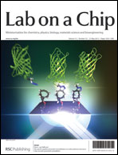
LAB ON A CHIP
Elevating Research Standards in Biochemical TechnologyLAB ON A CHIP, published by the Royal Society of Chemistry, is a prestigious journal that occupies a pivotal position within the realms of biochemistry, bioengineering, and biomedical engineering. With its ISSN 1473-0197 and E-ISSN 1473-0189, this UK-based journal has been at the forefront of microfluidics and lab-on-a-chip technology since its inception in 2001, consistently contributing to advancements in these dynamic fields. The journal enjoys an impressive reputation, boasting a Q1 ranking in several categories, including Biochemistry and Bioengineering, and maintaining a significant presence reflected through its Scopus rankings. The journal's commitment to innovation and cross-disciplinary research is evident as it bridges chemistry with nanoscale science and technology, making it an essential resource for researchers, professionals, and students seeking to stay abreast of groundbreaking developments. Although it follows a traditional subscription model, its high visibility and accessibility underscore the importance of sharing cutting-edge research findings globally. Recognized as a vital platform for fostering scientific discourse, LAB ON A CHIP continues to play a crucial role in shaping the future of laboratory technology and applications.
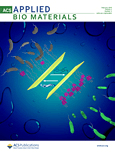
ACS Applied Bio Materials
Connecting Science and Technology for Biomedical AdvancementsACS Applied Bio Materials is a leading academic journal published by the American Chemical Society, focusing on the innovative intersection of bioengineering and materials science. Since its inception in 2018, the journal has established itself as a pivotal platform for disseminating impactful research within the fields of Biochemistry, Biomaterials, Biomedical Engineering, and Chemistry, often ranked in the top tiers of these categories. With an impressive impact factor, it holds a Q2 ranking in both Biochemistry and Biomaterials, and a prestigious Q1 ranking in Biomedical Engineering and miscellaneous Chemistry, underscoring its significance in advancing knowledge and practices across these disciplines. The journal’s editorial commitment to high-quality, peer-reviewed research ensures relevance and rigor, appealing to a diverse audience of researchers, professionals, and students keen to explore breakthroughs in bio-related materials technology. The access options enhance its visibility and reach, allowing for a broader dissemination of studies that drive innovation and collaboration in biotechnology and material sciences. Located in the heart of Washington, DC, ACS Applied Bio Materials serves as a crucial resource for advancing the future of healthcare, engineering, and materials research.

Chemosensors
Unlocking the Potential of Chemical SensorsChemosensors is a distinguished open-access journal published by MDPI, focusing on the innovative field of analytical chemistry and physical and theoretical chemistry. Since its inception in 2013, the journal has rapidly established itself as a pivotal platform for the dissemination of cutting-edge research related to the development and application of chemical sensors, encompassing various methodologies and technologies that contribute to advancements in diagnostics, environmental monitoring, and industrial applications. Based in Switzerland, the journal operates with a commitment to accessibility, ensuring that all published articles are freely available to a global readership. With a current impact factor that positions it in the Q2 quartile for both Analytical Chemistry and Physical and Theoretical Chemistry, Chemosensors attracts a diverse audience of researchers, professionals, and students eager to explore new findings and foster collaborative efforts in sensor technology and its applications. As it continues to grow, Chemosensors remains devoted to advancing scientific knowledge and innovation in its field, making significant contributions to the global scientific community through its rigorous peer-review process.

APL Bioengineering
Unleashing the Potential of Bioengineering InterdisciplinarityAPL Bioengineering is a premier open-access journal published by AIP Publishing, dedicated to advancing the field of bioengineering and its interdisciplinary applications. Established in 2017, this journal serves as a vital platform for researchers, professionals, and students interested in the critical intersections of bioengineering, biomaterials, biomedical engineering, and biophysics. With an impressive impact factor and consistent rankings in the Q1 category across multiple domains, including biochemistry and materials science, APL Bioengineering has positioned itself among the top journals in its field. The journal aims to publish innovative original research, comprehensive reviews, and insightful case studies that further the understanding and application of bioengineering principles. Since its inception, APL Bioengineering has fostered a community of thought leaders, providing open access to ensure broad dissemination of knowledge and advancements that underpin the future of biomedical innovation.
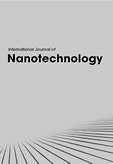
International Journal of Nanotechnology
Pioneering Insights in the World of NanoscienceInternational Journal of Nanotechnology, published by INDERSCIENCE ENTERPRISES LTD, is a prominent academic platform dedicated to advancing research in the rapidly evolving field of nanotechnology. With an ISSN of 1475-7435 and an E-ISSN of 1741-8151, this journal has been contributing valuable insights and innovative findings since its inception in 2004. Although currently not an open-access publication, it serves as an essential resource for researchers, professionals, and students alike, encompassing critical areas such as bioengineering, condensed matter physics, and materials science. The journal is indexed in Scopus, highlighting its academic rigor, albeit ranking in the lower quartiles across several categories. As it progresses towards its 2024 milestone, the International Journal of Nanotechnology continues to play a crucial role in fostering collaborative scientific discourse and pushing the boundaries of knowledge in nanoscience. With a distinguished reputation in the United Kingdom and beyond, it is a vital tool for anyone looking to stay at the forefront of nanotechnology advancements.

International Journal of Nanoscience
Advancing Knowledge in Nano-Applications and BeyondThe International Journal of Nanoscience, published by WORLD SCIENTIFIC PUBL CO PTE LTD, stands as a significant platform in the multidisciplinary field of nanoscience and nanotechnology, offering a unique insight into innovative research developments and applications from 2004 to 2024. Based in Singapore, this journal provides an academic space for researchers, professionals, and students to explore the latest advancements across its wide-ranging scopes, which include bioengineering, biotechnology, computer science applications, condensed matter physics, electrical engineering, and materials science. While currently categorized in Q4 quartiles across multiple fields, the journal's commitment to quality research and scholarly discourse positions it as a pivotal resource for driving forward the understanding and application of nanoscience. Despite its non-open access format, the journal invites subscriptions from institutions and individuals eager to stay ahead in this rapidly evolving discipline. By fostering an environment of collaboration and innovation, the International Journal of Nanoscience aims to contribute significantly to the body of knowledge essential for future breakthroughs in science and technology.
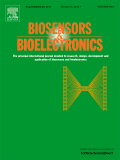
BIOSENSORS & BIOELECTRONICS
Transforming Ideas into Innovative SolutionsBIOSENSORS & BIOELECTRONICS, published by Elsevier Advanced Technology, is at the forefront of research and innovation in the realms of biomedical engineering, biophysics, and biotechnology. Established in 1990, this esteemed journal has established itself as a premier platform, receiving a prestigious Q1 ranking across multiple categories, including Electrochemistry and Nanoscience, reflecting its critical impact on advancing scientific knowledge and technology. With an impressive range of topics, including the latest trends in biosensor development and bioelectronic application, it serves as an invaluable resource for researchers, professionals, and students alike, facilitating collaborative dialogue and innovative solutions. Though primarily subscription-based, the journal is accessible from its UK headquarters in Oxford, promising rigorous peer-reviewed articles that inform future trends and applications in this dynamic field.